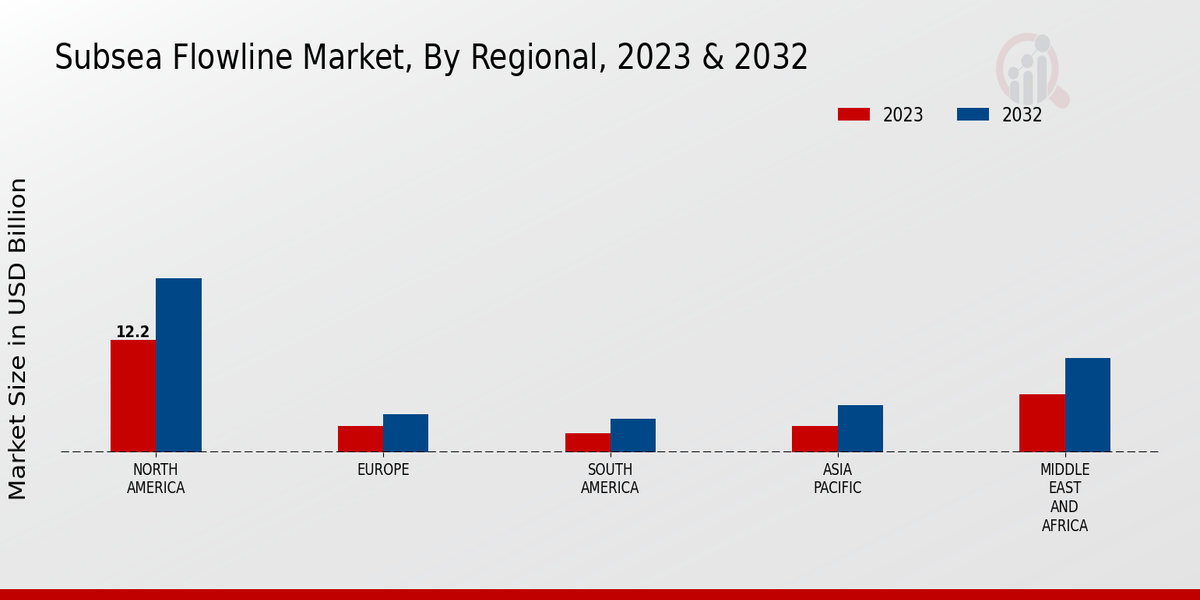Regulatory Support for Subsea Projects
Regulatory frameworks and government support are pivotal in driving the Global Subsea Flowline Market Industry. Many governments are implementing policies that encourage investment in subsea infrastructure, particularly in regions with significant offshore resources. This regulatory support often includes financial incentives, streamlined permitting processes, and safety standards that facilitate project development. As a result, energy companies are more likely to invest in subsea flowline projects, contributing to market growth. The alignment of regulatory frameworks with industry needs suggests a favorable environment for the expansion of subsea flowline applications in the coming years.
Rising Demand for Renewable Energy Sources
The Global Subsea Flowline Market Industry is also influenced by the rising demand for renewable energy sources, particularly offshore wind energy. As countries strive to meet their renewable energy targets, the development of offshore wind farms necessitates the use of subsea flowlines for energy transmission. This shift towards renewable energy is expected to contribute to the market's growth, with projections indicating a market value of 37.5 USD Billion by 2035. The integration of subsea flowlines in renewable energy projects not only supports sustainability goals but also diversifies the applications of subsea technologies, thereby expanding the market landscape.
Increasing Offshore Oil and Gas Exploration
The Global Subsea Flowline Market Industry is experiencing a surge in demand due to the increasing offshore oil and gas exploration activities. As energy companies seek to tap into untapped reserves, the need for efficient and reliable subsea flowlines becomes paramount. In 2024, the market is projected to reach 21.8 USD Billion, reflecting the industry's response to heightened exploration efforts. The expansion of subsea infrastructure is essential for transporting hydrocarbons from deepwater fields to processing facilities, thereby driving the growth of the subsea flowline market. This trend is likely to continue as companies invest in advanced technologies to enhance operational efficiency.
Technological Advancements in Subsea Systems
Technological advancements play a crucial role in shaping the Global Subsea Flowline Market Industry. Innovations in materials, design, and installation techniques have led to the development of more durable and efficient flowlines. These advancements not only enhance the reliability of subsea systems but also reduce operational costs. For instance, the introduction of flexible flowlines allows for easier installation and maintenance in challenging environments. As the market evolves, the integration of digital technologies, such as real-time monitoring and predictive maintenance, is expected to further optimize subsea operations. This continuous evolution suggests a robust growth trajectory for the subsea flowline market.
Growing Focus on Environmental Sustainability
The Global Subsea Flowline Market Industry is increasingly influenced by the growing focus on environmental sustainability. Companies are under pressure to minimize their ecological footprint while maximizing resource extraction. This has led to the development of environmentally friendly subsea flowline technologies that reduce emissions and enhance safety. The adoption of sustainable practices not only meets regulatory requirements but also appeals to environmentally conscious consumers and investors. As the industry shifts towards greener solutions, the demand for innovative subsea flowline technologies is likely to rise, further propelling market growth.














